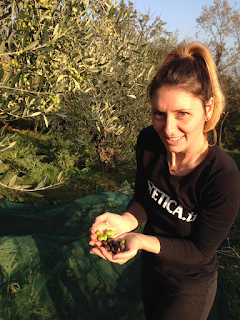Today I spoke with a dear friend of mine from the Netherlands about the Woman's Day. She asked me some personal questions and even though I quite don't understand the reason of those questions (hahaha, now I'm thinking about it!), what I do know is that it took me down the memory line and it gave me the inspiration for this article!
Today I want to cherish the beauty of a woman and especially THE one who brought us into this world, the one who is not anymore among us, but surely above us and inside us. I am gonna tell her wonderful story to the world., my Mom.
 |
| Me and my Mommy hiking in Italy 1988 |
First of all she was named by a flower, not the woman's day flower Mimosa, but Hortensia (which in English should be Hydrangea), a beautiful colorful flower that we used to have in our garden when I was a child.
 |
| Me in our childhood garden among Hortensia's |
Hortensia was born in Bucharest, Romania. Her biggest passion in life, MUSIC, turned after a lot of hard work into a lifetime career. She studied Direction of Choir at the University of Music in Bucharest where she met my father (he came all the way from Yugoslavia to study Music at the prestigious Conservatory in the capital city of Romania). She also played a piano many hours a day and was a member of Song, a cheerful and historical choir Ensemble in Bucharest.
 |
| Choir Ensemble SONG, Bucharest |
Is there anything more beautiful than combining music and love? Having that ultimate mutual understanding and vibrations. With that splendid energy, full of dreams and fresh with knowledge this young couple moved to my father's hometown in Eastern Serbia, well at that times it was glorious Yugoslavia! More precisely to Kladovo, a small town on Danube river that is also a natural border between Romania and Yugoslavia.
 |
| Me and Mommy in the oldtown Fetislam by the Danube River |
Dedicated to spreading love for music, my mother as piano and choir teacher and my father as piano and musical theory teacher, they soon enough joined the piano section of the Music School of Kladovo as the first ever highly trained professors with the University degree in 1980. That same school was renamed Music School "Konstantin Babić" under the direction of my father in 2006. It was the first time in Serbia that a music school got named by a living person, a musician of course. It is curious to mention that when the Music school first opened in September 1969, the first ever teacher in the piano section was my grandmother. It runs in the family, right?
 |
| My parents at the seminar in Montenegro in the 80s |
 |
| Choir competition in Šabac 1990 |
 |
| Choir competition in Vršac 1993 |
 |
| Me and mommy with the Angel of Music in 2010 |
I would like to close with one of my favorite photos, the cuddle of the world, a mothers hug. Love you mommy!






